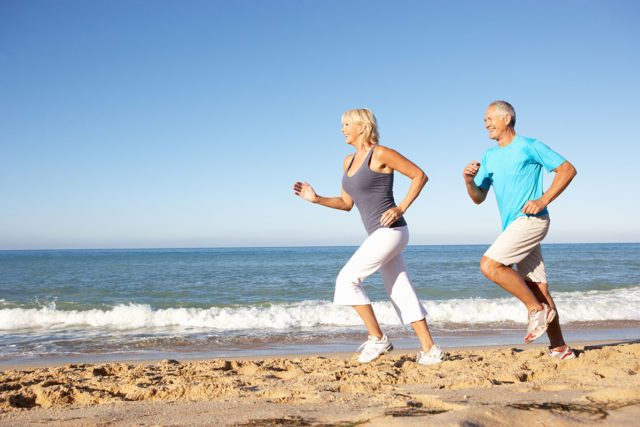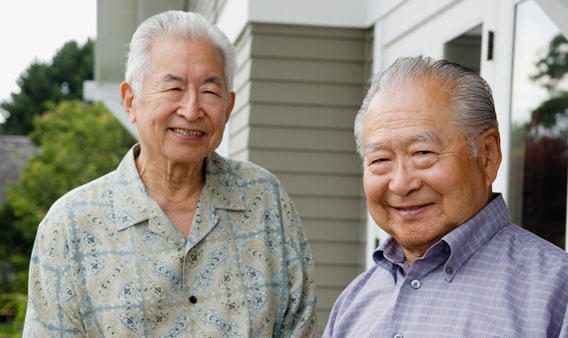Thanks to the findings of several researchers like Dr. Alexander Leaf, and later Dr. Michel Poulain, Dr. Luis Rosero Bixby, the Willcox brothers, as well as the journalist Dan Buettner, we learned about several places where people live the longest and their ages often exceed 100 years.
They have something in common; they enjoy good health and have an active life. But what have they done? What is special about these places?

According to those specialists, not only are good habits; it is their perspective of life, of living with purpose, which makes them live the longest. They found that the specific characteristics and their daily practices give rise to a high incidence of long-lived people.
It was precisely the researcher Michel Poulain who, after an exhaustive process of research and validation, identified, in 2004, the Italian island of Sardinia with a large number of centenarians.
From its name, that name was coined to other areas that were discovered, with similar characteristics. Did you know that the term “Blue Zone” was chosen simply because at that time the authors used a blue marker to mark places with long-lived populations on the map?
In the case of the Nicoya Peninsula, this region enjoys a longevity rate higher than that of the rest of the country, according to research conducted years ago by the demographer Luis Rosero Bixby.
In his research, he discovered that older adults have very low levels of functional disability, as well as cognitive impairment. They live more relaxed and consume a small number of drugs. In addition, the diet is based on a simple meal, away from processed and fast food. In parallel, the water of the peninsula has a high content of calcium and magnesium.
In the case of Okinawa in Japan, researchers discovered what they call “the genes of human longevity” where their centenarian inhabitants have genetic polymorphisms in the human leukocyte antigen that place them at a lower risk of suffering from inflammatory diseases, as well as of the autoimmune system.

However, this is not all, the centenarians of this place have a traditional way of life (eating habits, physical activity and the psychological and social aspects of its inhabitants). In addition, it has been observed that their cholesterol levels are low compared to the inhabitants of the West.
In the opinion of the author and international lecturer Francisco Javier González Martín, in these areas what prevails are the indicators of healthy lifestyles, vegetable, fruit, and vegetable intake; they have an active life; they maintain their social relationships; his spirituality; they feel and seek to be useful in their community.
What do we need?
According to the World Health Organization (WHO), we need:
Commitment to healthy aging; one that allows strengthening the capacities of the elderly.
Appropriate health systems; according to the organization, environments and capacities must be improved in order to meet the health needs of older adults.
Factors that influence healthy aging
The environment, according to the WHO, has an important influence on the establishment and maintenance of healthy habits.
Maintaining healthy habits throughout life. In particular, a balanced diet, regular physical activity, and refraining from smoking contribute to reducing the risk of non-communicable diseases and improving physical and mental abilities.
In older ages maintaining those habits is also important. The maintenance of muscle mass through training and good nutrition can help preserve cognitive function, delay dependence and reverse frailty.
Enabling environments allows carrying out activities that are important for people, despite the loss of faculties. Buildings and public transportation that are safe and accessible, and places where walking is easy, are examples of enabling environments.
Do you want to live longer? Just walk…
A recent study from the University of Sydney, Australia, led by Professor Emmanuel Stamatakis and published in the British Journal of Sports Medicine, showed that maintaining a speed between 5 to 7 kilometers per hour, or walking at a speed that is accelerate the pulse -but still being able to talk without getting breathless, can contribute to improve the cardiac health and the risk of mortality.
In the study, in which older people were analyzed, walkers aged 70 or older experienced a 46% reduction in the risk of death from cardiovascular causes.
The study, which was conducted on 50,225 walkers between 1994 and 2008, concluded that speed does influence the risk of mortality, as well as cardiac failure.


